
Write something
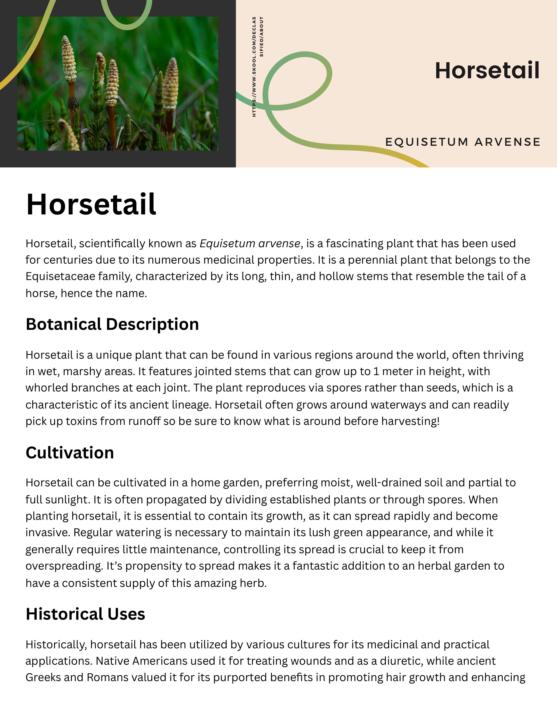
Christmas Fern
The Christmas Fern (Polystichum acrostichoides) is a resilient and evergreen fern that thrives in the temperate regions of eastern North America. This plant is particularly cherished for its striking dark green fronds, which maintain their lush appearance throughout the winter months, offering a refreshing burst of greenery when many other plants have withered in the cold. Its evergreen nature makes it easy to spot in the cold snowy winters of Ohio. Historically, the Christmas Fern has played a significant role in the traditional medicine practices of indigenous peoples and early European settlers. They recognized the plant's potential health benefits and utilized it for a variety of medicinal purposes. The fern was commonly used in herbal remedies aimed at treating ailments such as fever, pneumonia, and even heart conditions. Some herbalists believe that the Christmas Fern possesses anti-inflammatory and astringent properties, making it a valuable resource for addressing various health issues. The preparation of the fern for medicinal use often involved brewing its roots and fronds into teas, decoctions or creating a poultice. These preparations were thought to help alleviate respiratory problems, such as coughs and bronchitis, as well as digestive disorders, fevers and minor inflammation. The soothing qualities attributed to the Christmas Fern made it a sought-after ingredient in home remedies for centuries. In contemporary times Christmas Fern retains a niche presence in herbal medicine circles but is a good plant to be aware of due to its abundance and evergreen nature. Herbal gardeners may appreciate it for its ability to thrive in shaded areas and as a ground cover, contributing to a natural landscape as well as an addition to a home apothecary. As with any herbal remedy, caution is advised when considering the Christmas Fern for medicinal use. It is always best to consult healthcare professionals before incorporating it into a treatment regimen, especially for those with pre-existing health conditions or who are taking other medications. While the Christmas Fern holds a place in the history of herbal medicine, a thorough understanding of its properties, benefits, and limitations is essential for safe and effective use.
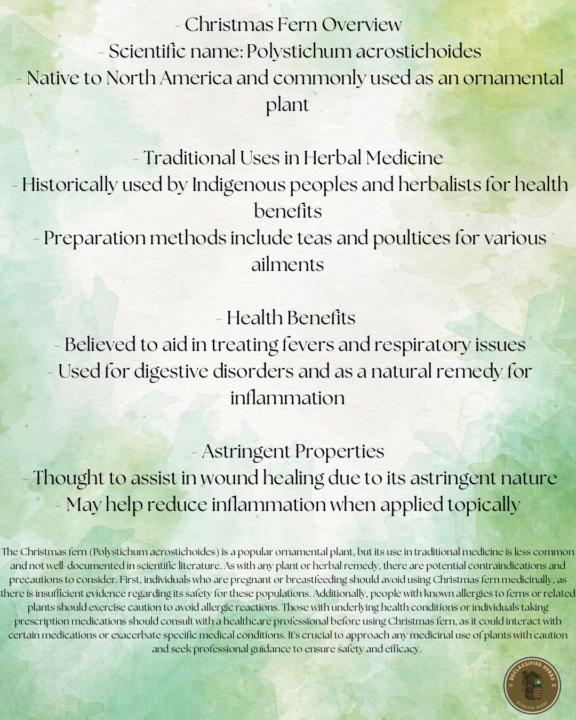
Turkey Tail
Overview Trametes versicolor, commonly known as the turkey tail mushroom, is a colorful and highly recognizable fungus found worldwide. Its vibrant, concentric bands of color, reminiscent of a wild turkey's tail feathers, give it its common name. It grows on dead or decaying wood and plays a crucial role in forest ecosystems as a decomposer. Identification - Appearance: The fruiting bodies are thin, leathery, and fan-shaped, displaying a variety of colors including browns, reds, blues, and greens, often with a velvety texture. - Size: Caps can range from 2 to 10 cm in diameter. - Underside: The underside of the cap is white to pale, with small pores instead of gills. Habitat Trametes versicolor is widely distributed and can be found in various climates. It thrives on decaying hardwood logs and stumps but can also grow on conifer wood, being particularly common in temperate and tropical forests. Ecological Role As a saprotrophic fungus, Trametes versicolor contributes to the breakdown of cellulose and lignin in wood, recycling nutrients back into the ecosystem. This process is vital for maintaining healthy forest environments. Medicinal Uses Trametes versicolor has been used in traditional medicine for centuries, particularly in Asia. Modern research has highlighted its potential health benefits: - Immune Support: Contains polysaccharopeptides like PSK (Krestin) and PSP, which are believed to enhance immune function. These compounds stimulate the production of immune cells, helping the body to better defend against pathogens. - Cancer Treatment: Some studies suggest that PSK may possess anti-cancer properties, potentially enhancing the effectiveness of conventional treatments such as chemotherapy and radiotherapy. It is often used as an adjunct therapy to improve the quality of life in cancer patients. - Antioxidant Properties: Known to contain antioxidants that help protect cells from oxidative stress and damage, which can contribute to chronic diseases and aging. - Anti-Inflammatory Effects: Research indicates that Trametes versicolor may help reduce inflammation, which is linked to various chronic conditions and diseases. - Antimicrobial Activity: Some studies suggest that compounds found in the mushroom exhibit antimicrobial properties, which may help combat infections caused by bacteria and viruses. - Gut Health: Preliminary research indicates that it may support gut health by promoting the growth of beneficial gut bacteria. - Blood Sugar Regulation: Some findings suggest that Trametes versicolor may help improve blood sugar levels and insulin sensitivity, which could be beneficial for individuals with diabetes. - Liver Protection: Certain studies suggest that it may have hepatoprotective effects, which could help safeguard liver function and health. - Fatigue Reduction: There is evidence to suggest that its immune-modulating properties may help alleviate fatigue, particularly in cancer patients undergoing treatment. - Mental Health Support: Emerging research indicates potential benefits for mental well-being, possibly through its effects on inflammation and immune response.
3
0
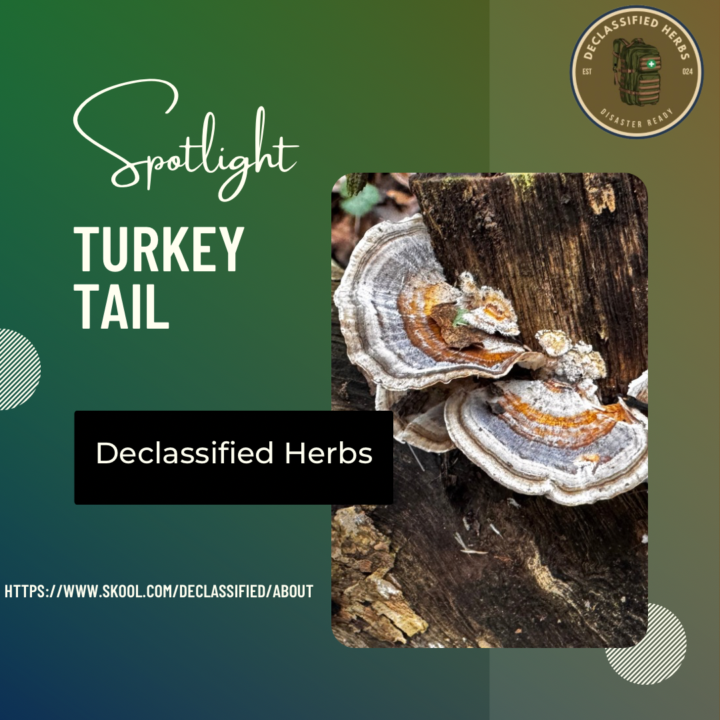
Prickly Ash
Prickly Ash Zanthoxylum Spp. Prickly Ash is quickly becoming one of my favorite herbs to work with. With uses ranging from pain relief to supporting elimination routes for sicknesses, this herb is a great addition to anyone’s toolbox. Known commonly as the Toothache Tree, Hercules Club or Tickle Tongue, Prickly Ash has been a medicinally significant since early Native American and colonial times. Earning its common name earnestly, the bark can be chewed to offer pain support when dealing with a toothache. It does have another action as a sialogogue which increases the production of saliva and aids digestion. Actions: Stimulates Circulation Anti-infective Lymph System Support Heating Emmenagogue Immune System Stimulant Analgesic Antirheumatic Prickly Ash can be used fresh or dried in a tea, decoction, oil, salve, tincture, powder, capsule or even just chewed. If used fresh the herb can become goopy in water extractions and may be more useable dry for some applications. Alcohol extractions seem to do best at around 50% ABV.
2
0
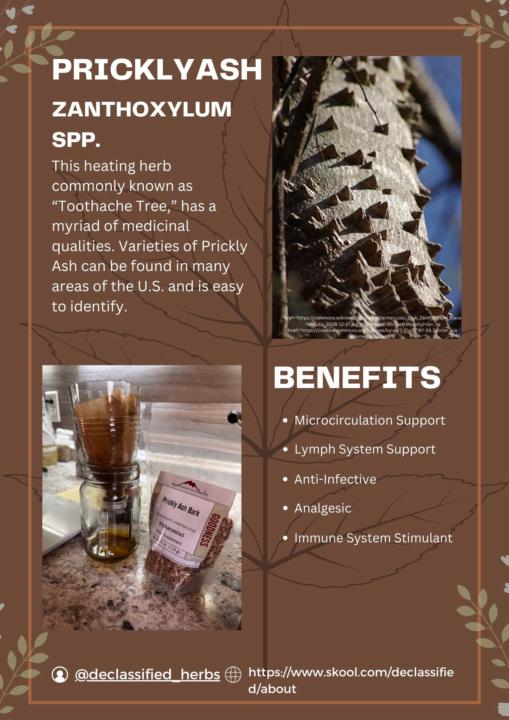
Self-Heal (Prunella vulgaris)
Self-Heal (Prunella vulgaris) is an herb native to much of North America. It grows prolifically in a variety of environments and soil conditions. It is easily identified but does have some similar lookalikes. Bugle (Ajuga reptans), Purple Deadnettle ( Lamium purpureum), Henbit (Lamium amplexicaule), Spotted Deadnettle (Lamium maculatum), Ground Ivy (Glechoma hederacea) and Cut-leaved Selfheal (Prunella laciniata) seem to be the most common lookalikes and all are generally safe (everything, including water, has a toxic dose). Self-Heal has been used for centuries as a wound support, anti-viral, anti-infective, anti-inflammatory and cardiovascular tonic herb. This low toxicity, high potency herb is simply packed with uses. One of the main actions of Self-heal is its ability to stimulate balanced production of Nitric Oxide (NOS) and Endothelial Nitric Oxide Synthase (eNOS). This supports faster healing of wounds by increasing vasodilation, normalizing inflammation. Self-Heal is a useful addition to a cold/flu formulas to help soothe inflamed tissue. As a cardiovascular tonic, Self-Heal is useful in supporting normal blood-glucose levels and reducing hypertension. Self-Heal aerial parts (stem, leaves, flower spikes) can be used in a tincture (1:4 ratio in 40% ABV), as an infusion (tea), decoction (strong tea), in ointments, salves, poultices and eyewash. References: Coffman, Sam (2021) Herbal Medic: A Green Beret’s Guide to Emergency Medical Preparedness and Natural First Aid, North Adams, MA, Storey Publishing, 354,355 Ody, Penelope, (1993) The Complete Medicinal Herbal, New York, NY, DK Publishing, 88
1-6 of 6
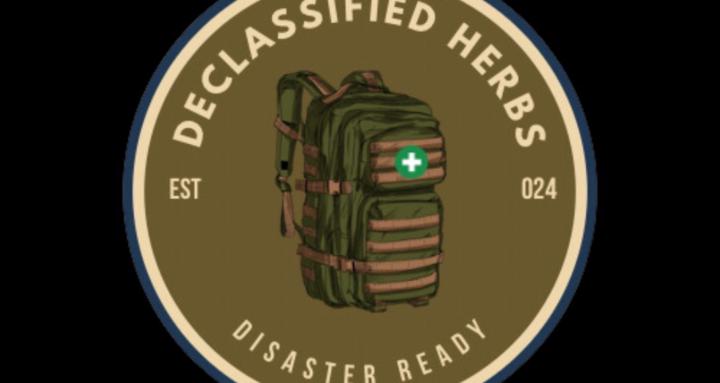
skool.com/declassified
A group for rediscovering how to utilize the abundant resources all around to better prepare yourself and your community for anything.
Powered by
